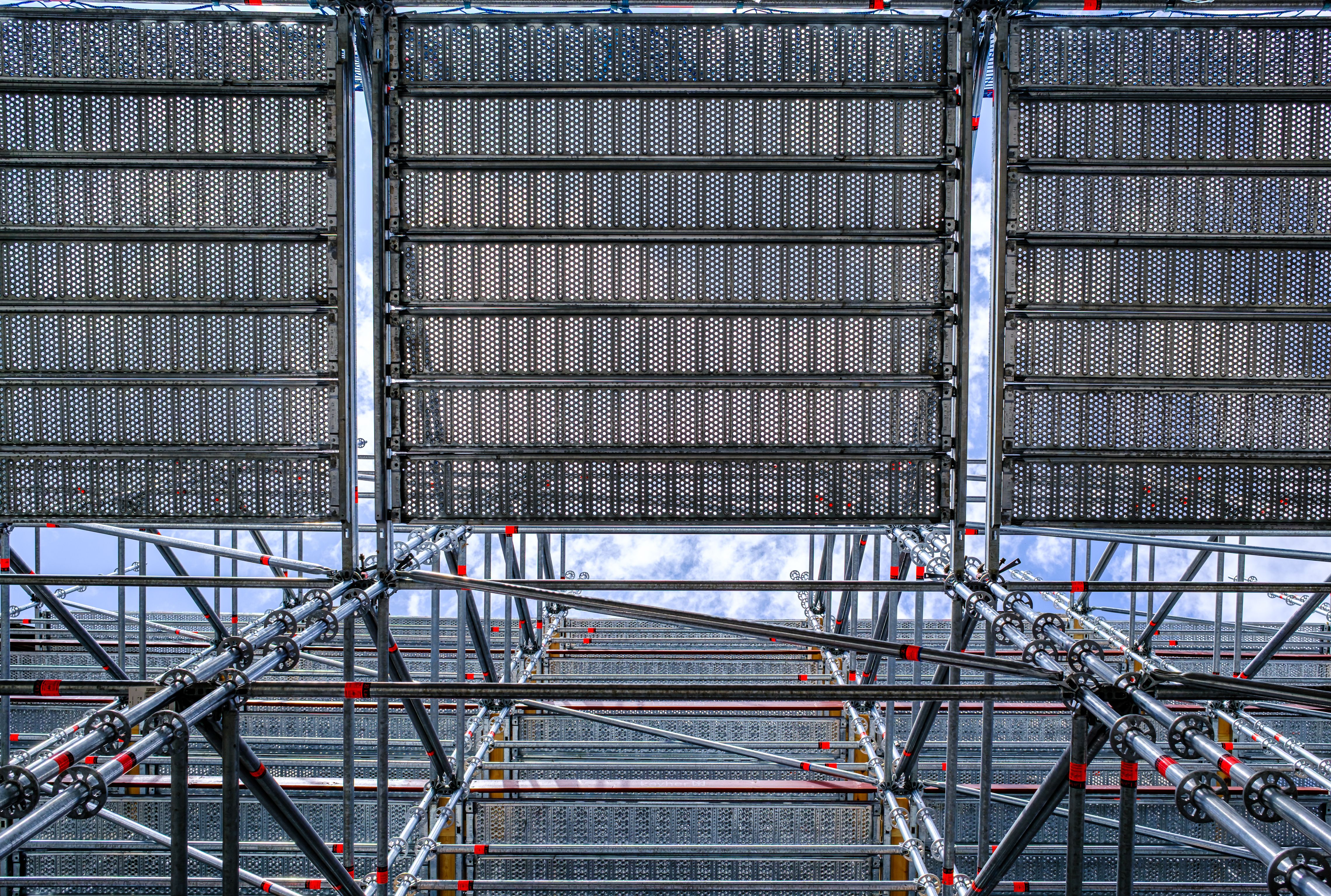Scaffold Insurance in Australia: The Complete Guide
Ja
Why Scaffold Insurance Matters in Australia

Scaffolding is one of the construction industry's most dangerous yet essential trades. Every day, scaffolders face risks that most other contractors rarely encounter — from working at height and handling heavy steel to protecting the public from injury. That's why scaffold insurance isn't just a nice-to-have; it's the lifeline that keeps Australian scaffolding businesses operating when the unexpected happens.
In Australia, where workplace safety standards are strict and liability claims can be costly, having the right insurance in place can mean the difference between business survival and financial ruin. Understanding scaffold insurance is critical if you're a small scaffolding contractor or managing a crew across multiple worksites. This guide breaks down everything you need to know — from risks and policy options to costs, claims, and the benefits of choosing a specialist cover tailored for scaffolders.
Understanding Scaffold Insurance
What Is Scaffold Insurance?
Scaffold insurance is a specialised business insurance designed for contractors and companies that erect, supply, or dismantle scaffolding. Unlike general trade insurance, scaffold insurance is built around the unique risks of working at height, managing heavy structures, and being directly responsible for the safety of workers and the public.
In simple terms, scaffold insurance is the financial safety net that ensures a scaffolding business can recover when accidents, property damage, or liability claims occur. Without it, a single incident — such as a collapsed scaffold injuring a passer-by — could result in claims running into millions of dollars, instantly crippling a business.

Why Scaffolding Requires Specialist Cover
It's important to understand that insurers do not view scaffolders like electricians, carpenters, or general builders. Here's why:
1. Height Risks – working metres above the ground means accidents can be fatal.
2. Public Exposure – scaffolding is often erected in public spaces.
3. Structural Liability – scaffolders alter environments temporarily, and failures cause big claims.
4. Regulatory Compliance – strict WHS laws mean extra responsibility.
Because of these exposures, standard "tradies insurance" policies often exclude scaffolding work. This is where scaffold insurance comes in.
Key Differences From General Trade Insurance
1. General trade insurance may cap height cover or exclude scaffolding.
2. Scaffold insurance explicitly covers working at unlimited heights, liability for structures, and tools/equipment at risk.
Without dedicated scaffold insurance, scaffolders may be uninsured in the very situations where they're most likely to face claims.

Scaffold Insurance in the Australian Context
1. Many tender contracts require proof of scaffold insurance.
2. Councils often demand liability limits of $10m–$20m.
3. Principal contractors prefer scaffolders with specialist cover.
Key Risks in the Scaffolding Industry
Common Hazards
1. Falls from height
2. Collapse of scaffolds
3. Falling tools and materials
4. Property damage
5. Weather conditions
6. Public injury risks
Legal Liabilities
1. Licensing for high-risk work.
2. Inspections are required for scaffolds above 4m.
3. Duty of care for employees and public safety.
Financial Exposure
1. Worker fall claim: $500k+.
2. Public injury: multi-million-dollar lawsuits.
3. Property damage: $1m+ repairs
Core Components of Scaffold Insurance
1. Public Liability Insurance – covers injury to third parties and property damage.
2. Products Liability Insurance – covers Liability for scaffolding structures supplied to others.
3. Tools & Equipment Insurance – protects against theft and accidental damage.
4. Workers' Compensation – legally required for employees.
5. Professional Indemnity – for scaffold design or certification services.
6. Commercial Vehicle Insurance – for utes, trucks, and trailers used in scaffolding operations.
7. Optional Covers – contract works, business interruption, management liability.
Specialist Policies for Scaffolders
Most general insurers avoid scaffolding risks because of the high level of Exposure. Specialist scaffold insurance policies are different — they are designed specifically for the trade.
Key advantages of specialist policies:
1. Explicit coverage for scaffolding activities.
2. Higher liability limits to meet contract requirements.
3. Protection for tools, equipment, and vehicles used in scaffolding.
4. Recognition of unique risks such as height, collapse, and public Liability.
By choosing a specialist policy rather than a generic tradies policy, scaffolders ensure they're covered for the risks that matter most.

Cost of Scaffold Insurance
1. Small operators: $6k–$12k annually.
2. Medium businesses: $12k–$25k annually.
3. Large firms: $30k+ annually.
Premium factors include: turnover, staff numbers, height of work, project type, claims history, and safety compliance.
Ways to reduce premiums:
1. Keep a clean claims record.
2. Document WHS compliance.
3. Limit high-risk activities.
4. Use a specialist broker.
5. Consider higher excesses.

Benefits of Choosing Specialist Scaffold Insurance
1. Tailored protection for real scaffolding risks.
2. Meets legal and contractual obligations.
3. Avoids exclusions in general policies.
4. Ensures business continuity after major incidents.
5. Provides expertise and support.
6. Improves competitive advantage.
7. Gives peace of mind to business owners.
How to Get Scaffold Insurance in Australia
1. Assess risks – type of work, height, turnover, staff.
2. Prepare documents – ABN, WHS policies, inspection records, and claims history.
3. Work with a specialist broker – they know which insurers will cover scaffolders.
4. Get multiple quotes – compare cost and coverage.
5. Tailor the policy – adjust liability limits, excesses, and add-ons.
6. Review policies annually – update them as your business grows.

Claims Process: When Things Go Wrong
Steps in a Claim
1. Secure the site and assist injured parties.
2. Notify broker/insurer immediately.
3. Gather evidence (photos, inspection records, witness statements).
4. Insurer investigates and appoints assessors if needed.
5. Settlement is made if approved.
Avoid mistakes: don't delay claims, don't admit Liability prematurely, and always keep compliance documentation.
Future Trends in Scaffold Insurance
1. Stricter WHS enforcement – more inspections and higher fines.
2. More reliance on specialist policies – general insurers are exiting scaffolding risks.
3. Technology adoption – drones, compliance apps, AI risk assessments.
4. Rising costs – premiums increasing with inflation and reinsurance pressure.
5. Climate risks – storms and winds increase insurer scrutiny.
6. Industry associations play a bigger role in setting standards.
Protecting Your Business with Scaffold Insurance
Scaffolding is a high-risk trade, and scaffold insurance is the foundation of safe, responsible business operation. Generic tradie policies won't cut it — scaffolders need cover that addresses their real-world risks.
In an industry where one accident can cost millions, scaffold insurance isn't just another business expense — it's the cost of staying in business.

FAQs About Scaffold Insurance in Australia
1. What is scaffold insurance?
Specialist insurance for scaffolders covers Liability, tools, employees, and vehicles.
2. Why do scaffolders need specialist insurance?
Because general trade policies exclude scaffolding activities.
3. How much does scaffold insurance cost?
Small: $6k–$12k/year. Medium: $12k–$25k. Large: $30k+.
4. Is scaffold insurance required by law?
Not directly, but Liability and workers' Compensation are required for most contracts.
5. What does scaffold insurance cover?
Liability, workers' comp, tools, vehicles, and optional extras like contract works.
6. Do scaffolders need public liability insurance?
Yes — it's the most essential form of cover.
7. Can scaffolders use tradies' insurance instead?
No — most tradie policies exclude scaffolding.
8. How can scaffolders reduce premiums?
By maintaining strong safety compliance and a clean claims history.
9. How are claims handled?
Report immediately, provide evidence, the insurer investigates, and the settlement follows.
10. Who provides scaffold insurance?
Specialist insurers and underwriting agencies that focus on high-risk trades.
Protect Your Business Today
👉 Get a tailored scaffold insurance quote now and secure the protection your scaffolding business needs to operate with confidence.
Share Knowledge, Strengthen the Industry
👉 Share this guide with other scaffolders to help raise awareness and keep the Australian scaffolding industry safer and stronger.
